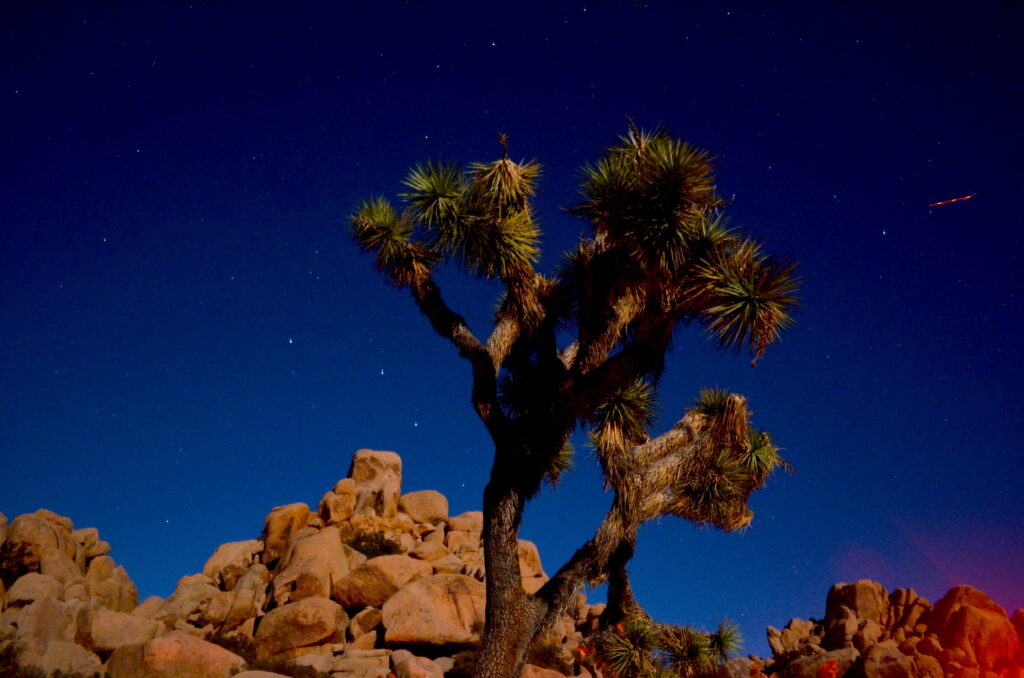
The Joshua tree is a powerful living illustration of resilience and thriving in harsh conditions. I spent the evening there making photographs of the trees, rock formations, and stars, like the one shown here.
Growing in the arid Mojave Desert, it adapts to extreme heat, cold, and drought with deep roots and bushy, fibrous reaching branches. Its ability to flourish where most plants would die is a poignant symbol of the reality that our environmental challenges can result in strength, and that perseverance in adversity not only helps us survive but enables us to grow in ways we never imagined. Like the Joshua tree, we can find our greatest growth and beauty when we adapt and push forward in difficult environments.
Our community is in shambles after the huge hiring orgy before the pandemic, and the subsequent cascading down the macroeconomic slope that has left many of us under- or un-employed. But this is temporary. As the long tail impact of the pandemic works its way through the global economy, keep in mind that we are the profession positioned to bring the human-centered lens to AI product design, which is entering the wildcat, land grab, gold rush, effusive exploration of what is possible with this latest seismic innovation tsunami that will be released when interest rates hit the tipping point.
Instead of giving up on UX, I am devoting a lot of energy to understanding how to prepare UX teams for the rather steep learning curve that is required to impact the direction of AI product design, to the same degree that we impacted e-commerce in the early 2000’s. I’m hoping to complete a workshop I am working on to help UX teams transition to a place of influence among the data scientists, engineers, and entrepreneurs who are moving forward with AI at breakneck speed. Let’s work together to ensure that UX will be well-positioned as architects, rather than relegated to decoration and ease of use. More on that in a different journal entry.

